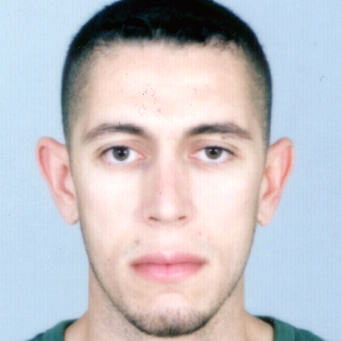
Adlen Kerboua
Work place: Department of computer science, University of Constantine 2 - A. Mehri, Constantine, Algeria
E-mail: adlen.kerboua@univ-constantine2.dz
Website:
Research Interests: Computer systems and computational processes, Artificial Intelligence, Computer Vision, Pattern Recognition
Biography
Adlen Kerboua is a Ph.D. candidate in the Department of Computer Science at University of Constantine 2 - A. Mehri, Algeria. In the field of artificial intelligence. He received Engineer degree in computer science from Constantine University (Algeria) in 1999, a Master degree in intelligent systems from Savoy University (France) in 2004 and the degree of magister in artificial intelligence from Tebessa University (Algeria) in 2011. His research interests are Vision, Action Recognition and Artificial Intelligence.
Author Articles
3D Skeleton Action Recognition for Security Improvement
By Adlen Kerboua Mohamed Batouche
DOI: https://doi.org/10.5815/ijisa.2019.03.05, Pub. Date: 8 Mar. 2019
Most of action recognition methods allow achieving high action recognition accuracy, but only after processing the entire video sequence, however, for security issues, it is primordial to detect dangerous behavior occurrence as soon as possible allowing early warnings. In this paper, we present a human activity recognition method using 3D skeleton information, recovered by an RGB-D sensor by proposing a new descriptor modeling the dynamic relation between 3D locations of skeleton joints expressed in Euclidean distance and spherical coordinates between the normalized joints, A PCA dimension reduction is used to remove noisy information and enhance recognition accuracy while improving calculation and decision time. We also study the accuracy of the proposed descriptor calculated on limited few first frames and using limited skeleton joint number, to perform early action detection by exploring several classifiers. We test this approach on two datasets, MSR Daily Activity 3D and our own dataset called INDACT. Experimental evaluation shows that the proposed approach can robustly classify actions outperforming state-of-the-art methods and maintain good accuracy score even using limited frame number and reduced skeleton joints.
[...] Read more.Other Articles
Subscribe to receive issue release notifications and newsletters from MECS Press journals